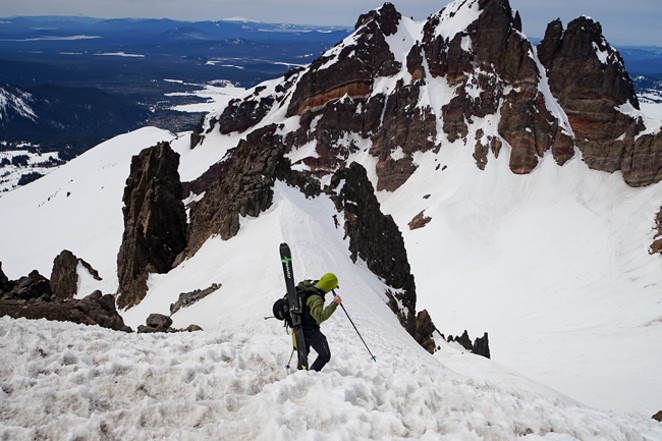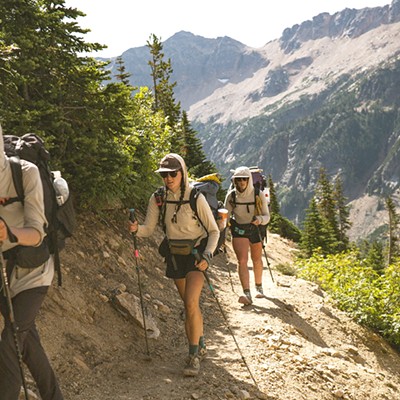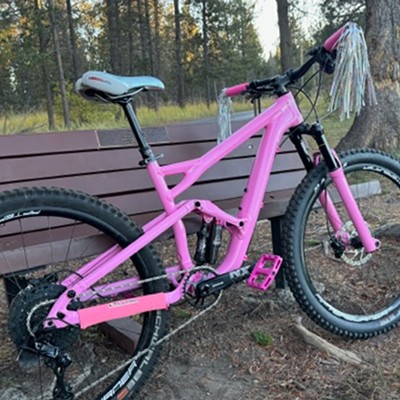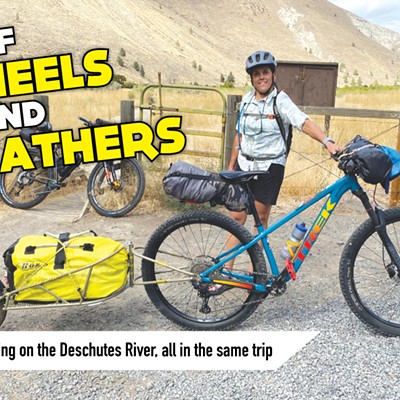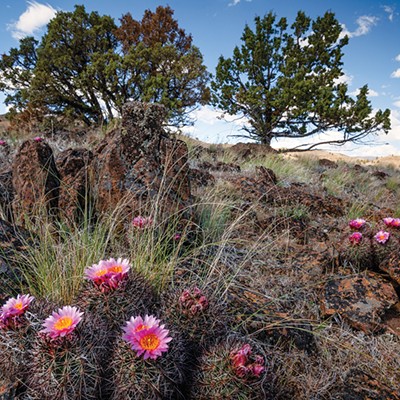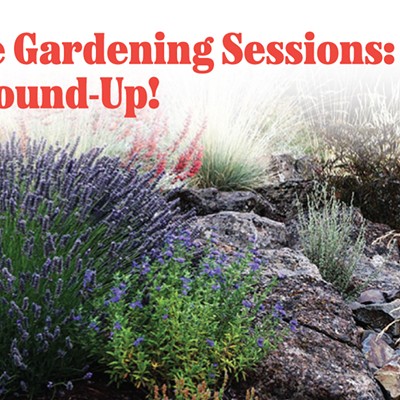CORN SNOW - /kôrn sn/
noun: NORTH AMERICAN
noun: corn snow
1. Snow with a rough granular surface resulting from alternate thawing and freezing.
2. A favored spring time snow type for skiers and snowboarders in the West.
3. The mechanism of injury for Corn Rash. See severe skin abrasion.
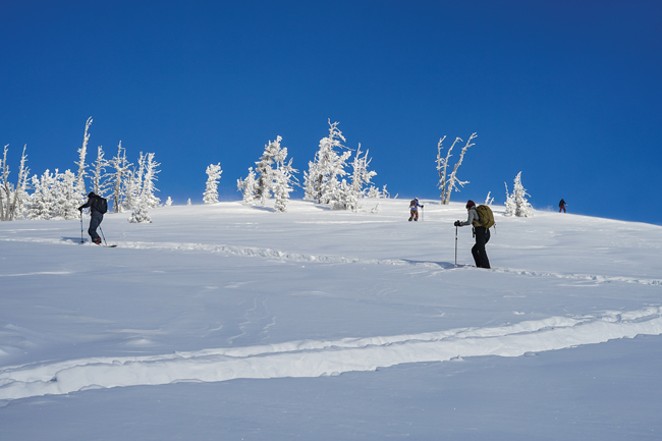
Much has been written about the biking here in Central Oregon, and Bend is widely known as a bicycling destination, but lest you all forget, the skiing and snowboarding opportunities here are excellent. Second winter has arrived, and the recent stack of late spring storms will extend the Annual Corn Harvest in the High Cascades well into the summer. You have read about it in the news, heard about it from your friends, and maybe got a taste of it at this year's Vertfest at Mt. Bachelor; spring skiing is addictive! The days are longer, access to trailheads easier, the weather warmer and snowpack more stable. Now it's time to get psyched, gear up, make a plan, and become a Corn Harvest aficionado. If you dream of squiggly lines and love to adventure, ski touring can add an extra month (or three) to your season.
Pro Tip #1: Tune your skis. Sharpen edges, add deeper structure to the base and apply warm temperature wax.
Why is spring skiing so addictive? Gabriel Coler, avalanche forecaster for Central Oregon Avalanche Center, says the answer is the combination of the volcanic chain of mountains and a deep snow pack.
"Our local peaks are seemingly designed for skiing with many long descent options often right off the summit. Our deep maritime snowpack and relatively high elevations mean the snow sticks around through the spring months," says Coler. "Spring skiing is all about getting up into the alpine terrain, which is often too stormy or inaccessible during the winter months," he continues. "Skiing on volcanoes is pretty unique—a fact I am reminded of each spring when I run into visitors from around the country. During the spring months, the temperatures warm up and the sun gets stronger, (which) helps the snow melt during the day and then when it refreezes at night, produces great corn skiing."
Pro Tip #2: Bring skin wax to mitigate your climbing skins from getting wet and refrozen.
Even in the more stable conditions of the spring, Coler is quick to remind people to never let safety guards down while exploring in the backcountry. "In terms of safety, spring ski touring isn't any different than any other day of touring," he says. "Skiers need to anticipate the conditions and plan an appropriate tour to ensure good skiing and avoid avalanches or other hazards. For most of us, this starts by checking the local avalanche bulletin. (Here at) Central Oregon Avalanche Center, we publish forecasts until the end of April, (and) after that it may still be useful as users can read or submit avalanche observations and conditions."
Pro Tip #3: Sunscreen up early. Reapply often and don't forget your ears and under the chin.
Chasing corn snow does not require any specific equipment outside of a normal backcountry setup. However, Pete Keane, international mountain guide, says, "One of the most often- overlooked pieces of spring gear is ski crampons. We get a lot of pushback from our guests about the use of (them), but once a skier uses them, they are hooked. They are relatively inexpensive and light." Spring skiing often lures one up higher in the mountains, in firm or icy conditions. "They (ski crampons) are not designed to help with making a steeper skin track, they give an uphill traveler more security on a regularly angled skin track with firm conditions," says Keane. "They can be essential on many tours."
“Skiing on volcanoes is pretty unique—a fact I am reminded of each spring when I run into visitors from around the country.”—Gabriel Coler
tweet this
Pro Tip #4: Bury/hide "end of trip" beers where no one else can find them.
Spanning 260 miles long, Oregon's Cascade Range covers roughly 17,000 square miles, or about 17% of the state—plenty for both the serious and armchair adventurer to explore. Roads begin to reopen and trailheads get easier to access, allowing for many more palatable touring options. From easy, from-the-car approaches to multi-day affairs, there is plenty of snow to keep one motivated.
"Broken Top Bowl has the best lines for spring skiing," Keane said. "With relatively easy access and a large choice of terrain options, it's easy to get as extreme or mellow, as you want." For those with bigger aspirations, "two of the more non-standard ski descents in the range are the Lewis and Prouty Headwalls on South Sister. Both of these routes don't get skied very often, and they are steep and long," Keane said.
Quick hits: Mt. Bachelor, Tumalo and Broken Top
Long day: South or Middle Sister, Mt. Washington or Three Fingered Jack
Epic: Sisters Traverse

